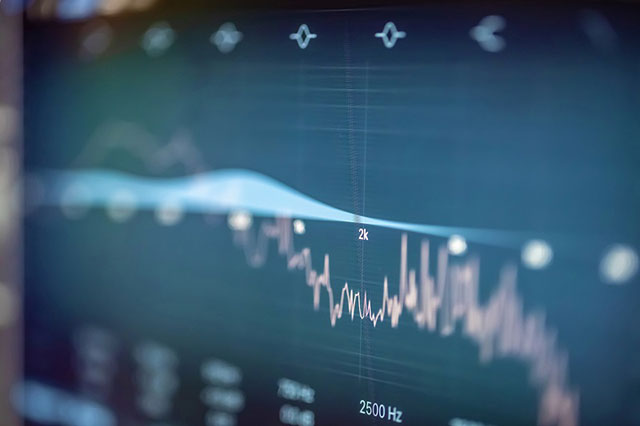 Audio mastering holds a pivotal role in the music production process, where it adds the final touches to a recording, ensuring that it sounds polished, cohesive and ready for distribution. The mastering engineer carefully fine-tunes the audio, addressing any sonic imperfections and enhancing its overall sonic characteristics.
Audio mastering holds a pivotal role in the music production process, where it adds the final touches to a recording, ensuring that it sounds polished, cohesive and ready for distribution. The mastering engineer carefully fine-tunes the audio, addressing any sonic imperfections and enhancing its overall sonic characteristics.
The mastering stage encompasses various tasks, including equalization, compression, stereo enhancement, harmonic enhancement and dynamic range adjustment. These processes work together to achieve a balanced and professional sound that translates well across different playback systems and environments.
While the mastering engineer's expertise is vital, the choice of file format used during the mastering process also plays a crucial role. The file format determines how the audio data is encoded, stored and ultimately delivered to the end listener.
Different file formats offer distinct characteristics, such as compression algorithms and quality levels. Selecting the appropriate format is crucial to ensure that the mastered audio retains its original fidelity and integrity.
In this regard, the WAV (Waveform Audio File Format) format emerges as the de facto standard for mastering due to its exceptional features, which we'll delve into in the subsequent sections. By exploring the technical specifications, compatibility, audio quality and other aspects of WAV files, we can better understand why they have become the preferred choice in the mastering process.
Now, let's venture into the specifics of WAV files and their significance in the audio mastering domain.
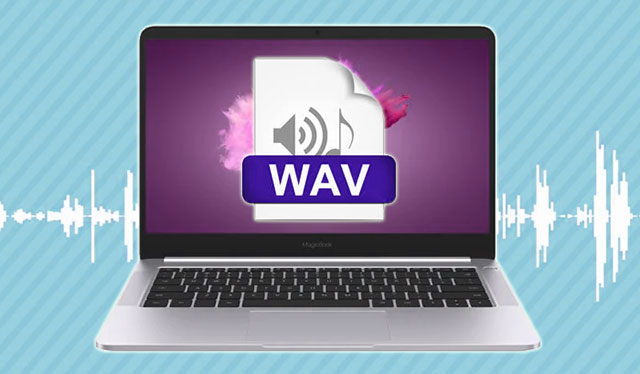 When delving into the world of audio mastering, it's crucial to understand the fundamental nature of WAV files. The WAV format is a widely recognized and extensively used audio file format known for its ability to store raw, uncompressed audio data. It's characterized by its versatility and ability to preserve the integrity of the original audio source.
When delving into the world of audio mastering, it's crucial to understand the fundamental nature of WAV files. The WAV format is a widely recognized and extensively used audio file format known for its ability to store raw, uncompressed audio data. It's characterized by its versatility and ability to preserve the integrity of the original audio source.
A WAV file consists of a sequence of audio samples captured at a specific sample rate, representing the amplitude of the audio signal at each point in time. Unlike compressed audio formats, WAV files do not undergo data compression or any lossy encoding, ensuring that the audio is preserved in its purest form.
To truly appreciate the significance of WAV files, it's essential to explore their history and evolution. Developed by Microsoft and IBM in the early 1990s, the WAV format quickly gained popularity due to its simplicity and compatibility across different platforms.
Throughout the years, the WAV format has undergone advancements to accommodate evolving industry needs. From the initial 8-bit and 16-bit versions, it has expanded to support higher bit depths, such as 24-bit and 32-bit floating-point, enabling greater dynamic range and audio precision.
WAV files boast several technical specifications and advantages that make them an ideal choice for audio mastering. Firstly, they offer uncompressed audio storage, allowing for an accurate representation of the original sound, free from the artifacts and quality degradation associated with compressed formats.
Furthermore, WAV files support various sample rates, providing flexibility for capturing audio at different frequencies. This versatility enables mastering engineers to work with diverse audio sources, ensuring optimal playback across a wide range of devices and systems.
Another advantage of WAV files lies in their compatibility with an array of software applications and digital audio workstations (DAWs). Their widespread adoption and support within the industry make them an easily accessible and manageable format for audio professionals.
Moreover, WAV files facilitate seamless integration with hardware devices, making them suitable for mastering studio equipment and audio interfaces. Their compatibility with analog-to-digital converters and other essential components ensures a smooth workflow during the mastering process.
By leveraging these technical specifications and advantages, WAV files have firmly established themselves as the industry standard for audio mastering. They enable engineers to work with high-fidelity audio, accurately shaping and refining the sonic characteristics of a recording.
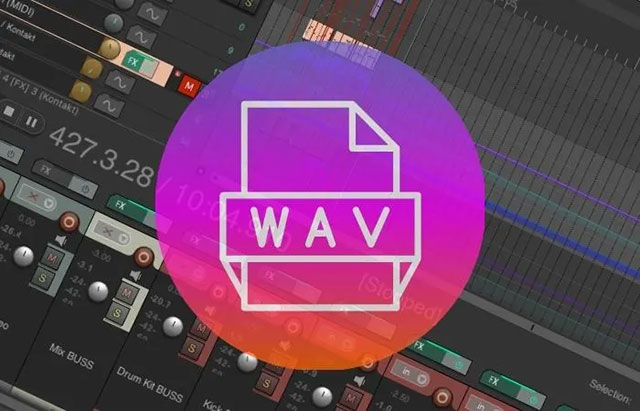 To grasp the significance of WAV files in audio mastering, it's essential to understand the distinction between lossy and lossless audio compression. Lossy compression algorithms, employed by popular formats like MP3 and AAC, achieve smaller file sizes by discarding certain audio data deemed less perceptible to the human ear. While this compression method efficiently reduces file sizes, it unavoidably compromises the original audio quality.
To grasp the significance of WAV files in audio mastering, it's essential to understand the distinction between lossy and lossless audio compression. Lossy compression algorithms, employed by popular formats like MP3 and AAC, achieve smaller file sizes by discarding certain audio data deemed less perceptible to the human ear. While this compression method efficiently reduces file sizes, it unavoidably compromises the original audio quality.
On the other hand, lossless audio compression, as exemplified by the WAV format, retains all the audio data from the original recording without sacrificing quality. By preserving the complete audio signal, lossless compression ensures a faithful representation of the source material, maintaining the nuances, dynamics and fidelity that are critical in mastering.
Audio mastering aims to optimize the sonic characteristics of a recording, enhancing its overall quality and ensuring it translates accurately across different playback systems. Preserving the audio quality throughout the mastering process is paramount to achieving the desired results.
Due to their lossless nature, WAV files play a pivotal role in this preservation. They allow mastering engineers to work with the highest quality audio, unaffected by the artifacts and quality degradation associated with lossy compression. This ensures that the mastering decisions and adjustments made during the process are based on the truest representation of the original recording, leading to a superior final product.
The WAV format's inherent ability to store audio data without any loss or compression further emphasizes its significance in audio preservation. By using WAV files in mastering, the engineer can safeguard the integrity of the audio, capturing every detail and subtlety.
Lossless audio preservation is of utmost importance, especially in scenarios where the mastered tracks will undergo further processing, such as remixing, remastering, or licensing for different formats. WAV files serve as a reliable archival format, ensuring that the audio remains intact and unaltered, ready to be utilized in future endeavors.
Furthermore, the WAV format's compatibility with a wide range of software applications and hardware devices allows for seamless integration into various professional workflows. This flexibility and accessibility make WAV files an ideal choice for audio professionals looking to maintain the highest standard of audio quality throughout the mastering process.
By recognizing the significance of lossless audio and leveraging the capabilities of the WAV format, mastering engineers can preserve the original audio fidelity, make informed artistic decisions and deliver exceptional results.
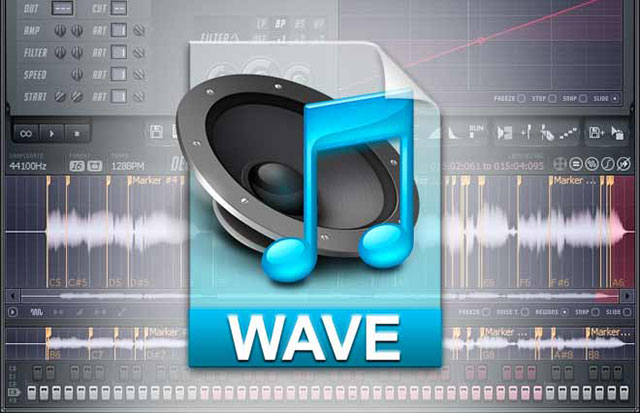 When considering file formats for audio mastering, WAV stands out for its universal support and widespread adoption across the industry. Virtually all major operating systems, media players and audio editing software recognize and handle WAV files with ease. This level of compatibility ensures seamless playback and sharing of mastered audio across different platforms, minimizing any technical barriers or compatibility issues.
When considering file formats for audio mastering, WAV stands out for its universal support and widespread adoption across the industry. Virtually all major operating systems, media players and audio editing software recognize and handle WAV files with ease. This level of compatibility ensures seamless playback and sharing of mastered audio across different platforms, minimizing any technical barriers or compatibility issues.
Moreover, the extensive usage and recognition of WAV files make them a standard choice for music distribution and streaming platforms. Many online music stores and streaming services prefer WAV as the primary format for delivering high-quality audio to consumers, further solidifying its universal support and acceptance.
One of the key considerations for mastering engineers is the compatibility of the chosen file format with their preferred digital audio workstation (DAW). WAV files shine in this aspect as they are widely supported by virtually all popular DAWs available today. Whether you're using industry staples like Pro Tools, Logic Pro, Ableton Live, or other professional software, WAV files seamlessly integrate into the mastering workflow.
The compatibility with DAWs allows engineers to leverage the full range of mastering tools and plugins available within their chosen software, ensuring precise control and customization over the audio. This flexibility empowers mastering engineers to implement their artistic vision with ease, making WAV files the go-to format for professionals in the field.
In addition to compatibility with DAWs, the versatility of WAV files extends to their integration with various hardware and software platforms used in audio production. Whether you're working in a professional mastering studio or a home-based setup, WAV files effortlessly integrate with a wide range of hardware devices and audio interfaces.
From analog-to-digital converters and mixing consoles to audio interfaces and outboard gear, WAV files can seamlessly interface with these components, ensuring a smooth workflow and accurate audio representation throughout the mastering process.
Furthermore, WAV files are compatible with an extensive array of software applications beyond DAWs. From audio editing software to audio restoration tools, mastering engineers can utilize WAV files with confidence, knowing that they are working with a format that's widely supported and recognized within the industry.
The compatibility and flexibility of WAV files empower mastering engineers with a seamless workflow, enabling them to work with the tools and equipment of their choice. This adaptability ensures that the mastering process can be carried out efficiently and effectively, regardless of the specific software or hardware ecosystem employed.
When it comes to audio mastering, maintaining high fidelity and preserving the original audio integrity is paramount. WAV files, with their uncompressed nature, play a crucial role in meeting these standards. Unlike compressed audio formats, which sacrifice certain audio data to achieve smaller file sizes, WAV files retain every bit of the original audio signal, resulting in uncompromised sound quality.
By working with WAV files, mastering engineers ensure that the full spectrum of frequencies, dynamic range and subtle nuances present in the original recording are faithfully preserved. This commitment to high fidelity audio allows for a more immersive and engaging listening experience, where the listener can appreciate the intricacies and details of the music as intended by the artist.
The WAV format's ability to retain the original audio integrity contributes significantly to the transparency and accuracy of sound in the mastering process. By avoiding data compression and lossy encoding, WAV files prevent any alteration or degradation of the audio content. This means that the mastering engineer can make precise adjustments and enhancements while staying true to the artist's original vision.
The absence of audio artifacts or compression artifacts ensures that the mastered tracks maintain their clarity, depth and tonal balance. Each element of the mix retains its distinct characteristics, resulting in a cohesive and well-defined soundstage. This level of audio preservation allows the mastering engineer to shape the audio with precision, focusing on subtle details and delivering a final product that represents the best possible version of the original recording.
The transparency and clarity of sound achieved through WAV files contribute to the overall quality of the mastered audio. By working with an uncompressed format, mastering engineers can accurately assess the impact of their adjustments and make informed decisions regarding equalization, dynamics and stereo enhancement.
WAV files eliminate any artifacts that may arise from lossy compression, ensuring that the mastered tracks sound natural and transparent. The absence of these artifacts allows the listener to experience the music in its purest form, without distractions or artifacts that could compromise the sonic experience.
The clarity of sound facilitated by WAV files also benefits the mastering engineer's critical listening process. By having access to uncompressed audio, they can discern intricate details, identify subtle issues and apply precise corrections. This level of clarity empowers the mastering engineer to unleash the full potential of the music, making it sound its best across various playback systems and environments.
Overall, WAV files' uncompressed nature and ability to retain the original audio integrity contribute to high fidelity, transparency and clarity of sound in the mastering process. By working with WAV files, mastering engineers can achieve exceptional audio quality, ensuring that the final product showcases the artist's intent with precision and authenticity.
Metadata refers to the additional information embedded within audio files, providing valuable details about the content. While often overlooked, metadata plays a crucial role in organizing, categorizing and identifying audio files, including WAV files. With WAV format, metadata can be embedded directly into the file, allowing for efficient management and retrieval of essential information.
By incorporating metadata into WAV files, mastering engineers can include details such as artist name, album title, track number, genre and even copyright information. This embedded metadata not only helps with the organization of audio files but also ensures that relevant information is readily accessible to music professionals, distributors and listeners.
Including track information within WAV files during the mastering process offers several advantages. Firstly, it enhances the professional presentation of the music. When tracks are properly labeled and tagged, it adds a level of professionalism and credibility to the final product, especially when submitting the mastered tracks for distribution or licensing.
Moreover, track information facilitates accurate identification and cataloging of audio files, simplifying the process of creating playlists, generating track listings and managing digital music libraries. For music consumers, having comprehensive track information enables them to identify and navigate through the content more efficiently, enhancing their overall listening experience.
In addition to embedded metadata, WAV files support the inclusion of supporting documentation, such as album credits, liner notes, lyrics and even artwork. This comprehensive package provides a rich multimedia experience for the listener and contributes to the overall context and appreciation of the music.
Furthermore, including supporting documentation within WAV files helps future-proof audio archives. By consolidating all relevant information within the file itself, mastering engineers and music professionals ensure that critical details are preserved alongside the audio content. This becomes particularly important in the long-term preservation of audio recordings, where comprehensive documentation aids in accurate archival, metadata management and historical reference.
By leveraging the capability to embed metadata and supporting documentation in WAV files, mastering engineers enhance the organization, presentation and archiving of audio content. This attention to detail not only benefits professionals within the music industry but also enriches the overall listening experience for music enthusiasts.
Within the music industry, WAV files have become the de facto standard for audio mastering due to their numerous advantages. The widespread adoption of WAV files can be attributed to their compatibility with various software platforms, hardware devices and digital audio workstations (DAWs). This ubiquity ensures seamless collaboration and exchange of audio files among mastering engineers, producers, artists and record labels.
Moreover, many industry professionals and organizations recognize WAV files as the preferred format for delivering high-quality audio. Music streaming services, online stores and digital distribution platforms often require submissions in WAV format to ensure the best possible sound quality for listeners. This emphasis on WAV files as a standard format reinforces their position as the go-to choice for mastering engineers.
Consistency and reliability are crucial for mastering engineers, as they work meticulously to shape the final sound of a recording. WAV files provide mastering engineers with a reliable and consistent audio source, enabling them to apply their expertise consistently across different projects.
By working with WAV files, mastering engineers can expect consistent audio quality, as these files preserve the original audio integrity without any compression artifacts. This consistency allows engineers to make precise adjustments, apply consistent EQ and dynamics processing and ensure a coherent sound across an album or project.
Furthermore, WAV files provide mastering engineers with reliable and accurate representations of the mix. The uncompressed nature of WAV files allows for precise monitoring and analysis, ensuring that any adjustments made during the mastering process are based on accurate information. This reliability empowers mastering engineers to make informed decisions and achieve the desired sonic outcome.
Mastering studios are equipped with a wide range of specialized hardware, including analog processors, equalizers, compressors and limiters, to enhance the audio quality during the mastering process. WAV files seamlessly integrate with these studio-grade devices, ensuring compatibility and optimal performance.
The ability of WAV files to interface with mastering studio equipment without any lossy conversions or format-related issues allows engineers to harness the full potential of their hardware setup. This compatibility guarantees that the mastering engineer can leverage the unique sonic characteristics of their equipment to achieve the desired sonic results.
Furthermore, the compatibility with mastering studio equipment extends to the monitoring systems used in the studio. WAV files can be accurately reproduced on high-quality monitors, ensuring that the mastering engineer can critically evaluate the changes being made and fine-tune the audio with precision.
By supporting the equipment and systems commonly found in mastering studios, WAV files provide mastering engineers with a reliable and efficient workflow, allowing them to achieve optimal results and meet the highest industry standards.
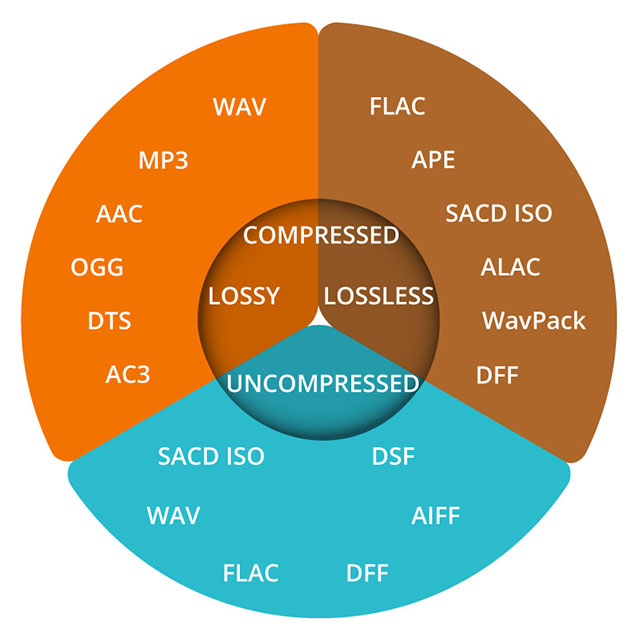 While WAV files are widely regarded as the standard for mastering, it's essential to consider other lossless audio formats that also offer high-quality audio preservation. FLAC (Free Lossless Audio Codec) and AIFF (Audio Interchange File Format) are two prominent alternatives to WAV files, each with its own merits and considerations.
While WAV files are widely regarded as the standard for mastering, it's essential to consider other lossless audio formats that also offer high-quality audio preservation. FLAC (Free Lossless Audio Codec) and AIFF (Audio Interchange File Format) are two prominent alternatives to WAV files, each with its own merits and considerations.
FLAC is a popular choice for lossless compression, offering a significant reduction in file size compared to uncompressed formats like WAV, while still maintaining the full audio fidelity. This smaller file size makes FLAC an attractive option for storage and distribution purposes, as it allows for efficient file transfer without sacrificing audio quality. Additionally, FLAC supports embedded metadata, providing similar benefits as WAV files in terms of organization and categorization.
AIFF, developed by Apple, is another lossless audio format that shares similarities with WAV files. Like WAV, AIFF files are uncompressed, ensuring the preservation of the original audio data. AIFF is widely supported across various platforms and software applications, making it a viable alternative for mastering engineers and music professionals.
In contrast to lossless audio formats, lossy audio formats such as MP3 prioritize file size reduction over audio quality. These formats achieve smaller file sizes by employing various compression algorithms that discard certain audio data deemed less essential to human perception. While lossy formats like MP3 have gained popularity due to their compact size and compatibility with portable devices, they inherently sacrifice some audio fidelity.
The primary advantage of lossy formats lies in their ability to achieve significantly reduced file sizes, making them ideal for streaming and online distribution where bandwidth and storage limitations come into play. However, it's crucial to note that repeated compression and decompression cycles can result in a cumulative loss of audio quality, known as generational loss.
When choosing the appropriate audio format for mastering, it's essential to evaluate the trade-offs and consider the specific requirements of the project. While FLAC and AIFF offer similar lossless audio preservation as WAV files, their advantages lie in file size reduction and compatibility with different platforms.
For projects that prioritize optimal audio quality and preservation, WAV files remain the top choice due to their uncompressed nature. WAV files ensure the highest level of fidelity and transparency, making them the go-to format for professional mastering studios.
However, for scenarios where storage space or bandwidth is a concern, FLAC and AIFF provide viable alternatives. These lossless formats strike a balance between audio quality and file size reduction, making them suitable for archiving, distribution and compatibility across a range of devices and software platforms.
On the other hand, lossy formats like MP3 are more appropriate for scenarios where file size reduction is paramount, such as online streaming or portable media players. These formats, while sacrificing some audio quality, offer the advantage of smaller file sizes and widespread compatibility.
Overall, the choice of audio format depends on the specific needs and priorities of the mastering project. WAV files remain the gold standard for uncompromised audio quality, while FLAC, AIFF and lossy formats like MP3 provide alternative options for efficient storage, distribution and compatibility.
Mastering audio files in the WAV format requires careful file preparation and organization to ensure an efficient and streamlined workflow. Here are some best practices to consider:
When working with WAV files for mastering, careful consideration of bit depth and sample rate is essential to maintain the integrity and quality of the audio. Here's what you need to know:
Metadata and tagging play a crucial role in organizing and identifying mastered tracks. Consider the following practices to optimize metadata for WAV files:
By adhering to these best practices for WAV file mastering, you can maintain a well-organized and efficient workflow while ensuring the highest quality and accuracy in the final mastered tracks.
The world of audio mastering is constantly evolving and with it, new audio file formats and codecs are emerging. These advancements bring about potential alternatives to the WAV standard. Let's explore some of the notable developments:
While WAV files have long been the de facto standard for mastering, it's worth considering potential disruptions or challenges to their dominance. Here are some factors that could influence the future of the WAV standard:
As audio mastering techniques evolve, so does the potential for advancements that could shape the future of the industry. Here are some areas where we anticipate progress:
As the audio mastering landscape evolves, it's important to stay informed and adapt to emerging trends and technologies. Exploring new file formats, monitoring potential disruptions to the WAV standard and embracing advancements in audio mastering techniques will help keep professionals at the forefront of the industry.
In conclusion, WAV files have emerged as the indisputable standard for audio mastering, thanks to their numerous benefits and crucial role in the industry. Throughout this article, we've examined the key attributes and significance of WAV files in mastering.
WAV files excel in preserving audio quality, offering an uncompressed format that faithfully retains the original integrity of the mastered tracks. By capturing the full dynamic range and frequency spectrum, WAV files ensure transparency and clarity in sound reproduction.
Their compatibility and widespread support across various digital audio workstations, hardware devices and software platforms make WAV files incredibly versatile and accessible for mastering engineers and musicians. This universal acceptance contributes to their enduring relevance in the field.
Another advantage of WAV files lies in their ability to embed metadata, providing essential track information, album artwork and other details. This facilitates organization and searchability, and enhances the overall experience of managing and accessing mastered tracks.
Looking ahead, the future prospects of the WAV format remain promising. While alternative formats may emerge and disrupt the landscape, WAV files continue to enjoy a strong foothold in the industry. Their established presence, compatibility with legacy systems and uncompromised audio quality contribute to their continued demand.
Furthermore, the evolution and adaptation of WAV files over time ensure their resilience and capacity to address emerging challenges. As the audio mastering landscape evolves, the WAV format is poised to meet the demands of professionals and audiophiles, ensuring the delivery of high-quality audio experiences.
In summary, WAV files represent the epitome of audio mastering standards, boasting unmatched audio quality, lossless compression, compatibility and metadata embedding capabilities. Their continued relevance and future prospects are driven by their established position in the industry and their ability to meet the evolving needs of audio production.